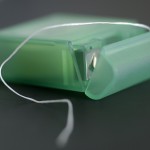
An effective oral hygiene regimen is important for the prevention of caries and periodontal disease. Regular and thorough toothbrushing with a fluoride toothpaste is still the most reliable of way of removing plaque although additional aids are needed to reach the interdental areas. Dental floss, interdental brushes and wooden dental stick are available for interdental use, and it has been suggested that the sequence of using a toothbrush and dental floss may influence plaque removal.
The aim of this review was to compare the clinical performance of flossing before or after tooth brushing.
Methods
Searches were conducted in the Cochrane library, Medline/PubMed, OpenGrey, Scopus and Web of Science databases supplemented by hand searches of the journals; Journal of Clinical Periodontology, Community Dentistry and Oral Epidemiology, Journal of Periodontal Research, Journal of Periodontology, Periodontal Clinical Investigation, Oral Diseases Periodontology 2000 and Journal of the Canadian Dental Association. Randomised controlled trials (RCTs) with a minimum follow-up of 2 weeks were considered. Two reviewers independently searched and selected studies and extracted data. Risk of bias was assessed using the Cochrane domains-based tool and a meta-analyses conducted.
Results
- 2 RCTs involving a total of 60 patients were included.
- Both studies were at unclear risk of bias
- Meta-analysis showed no statistically significant difference between floss-brush and brush-floss sequences; Mean Difference (MD) = 0.01 (95%CI; −0.16 to 0.18).
Conclusions
The authors concluded: –
Regarding the sequence of flossing and brushing, this systematic review with meta-analysis revealed that flossing before or after brushing had no significant effect on plaque reduction. However, further clinical studies must be carried out in relation to the topic.
Comments
The reviewers searched a good range of databases up to January 2021 supplemented by hand searching in a number of dental journals. Only two small RCTs ( Mazhari 2018, Torkzaban 2015) were identified both of which had a follow-up period of 2-weeks. Neither of the included studies was at low risk of bias for all of the assessed domains. While the findings suggest that there is no difference in the level of plaque removal with flossing before or after toothbrushing the amount a quality of evidence available is limited so additional high quality and well reported studies with a longer follow up period would be required to answer the question. A 2019 Cochrane review (Dental Elf – 15th Apr 2019) that looked at the effectiveness of interdental cleaning devices only included studies with a follow-up period of 4 weeks or longer concluding,
Using floss or interdental brushes in addition to toothbrushing may reduce gingivitis or plaque, or both, more than toothbrushing alone. Interdental brushes may be more effective than floss.
Links
Primary Paper
Silva C, Albuquerque P, de Assis P, Lopes C, Anníbal H, Lago MCA, Braz R. Does flossing before or after brushing influence the reduction in the plaque index? A systematic review and meta-analysis. Int J Dent Hyg. 2021 Aug 17. doi: 10.1111/idh.12546. Epub ahead of print. PMID: 34402188.
Other references
Mazhari F, Boskabady M, Moeintaghavi A, Habibi A. The effect of toothbrushing and flossing sequence on interdental plaque reduction and fluoride retention: A randomized controlled clinical trial. J Periodontol. 2018 Jul;89(7):824-832. doi: 10.1002/JPER.17-0149. Epub 2018 Jul 20. PMID: 29741239.
Torkzaban P, Arabi SR, Sabounchi SS, Roshanaei G. The Efficacy of Brushing and Flossing Sequence on Control of Plaque and Gingival Inflammation. Oral Health Prev Dent. 2015;13(3):267-73. doi: 10.3290/j.ohpd.a32678. PMID: 25197738.
Dental Elf – 15th Apr 2019
Interdental cleaning devices for prevention and control of caries and periodontal disease
Dental Elf – 27th Jun 2016
